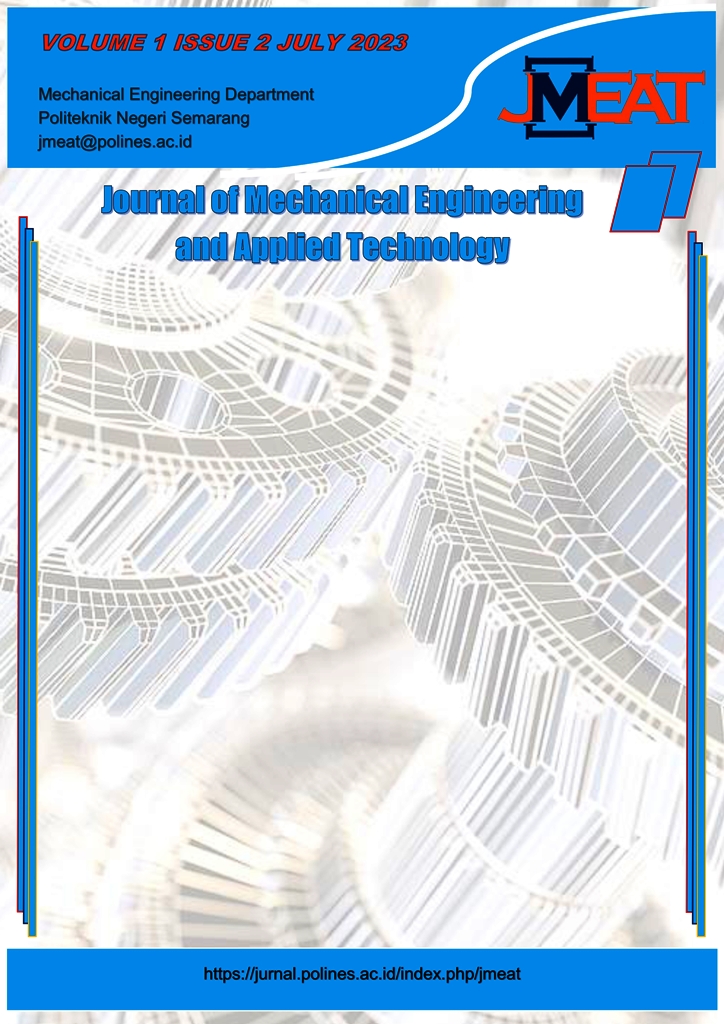Rancang Bangun dan Analisis Mesin Pemimpil Jagung dengan Daya Motor Listrik 1 HP
DOI:
https://doi.org/10.32497/jmeat.v1i2.4878Abstract
Sheller postharvest handling is a way to get attention. Corn sheller machine with 1 hp electrical machines power is designed to make it easier to scale postharvest handling household. This machine has using the final round 280 rpm. By the time the electric machines is turned on, the first pulley mounted on the motor will rotate and move the belt pulleys 2 then connected and will move the pulleys 3 and then move the disk sheller who will perform sheler inserted through the sleeve corn sheller and corn seeds will come out through the outlet of the seed corn and cob will exit through the outlet cob. This machine is operated semi-automatically by turning on the switch in the ON position and turn off the switch in the OFF position, and this machine can function properly as expected.
Keyword : disk sheller , electrical machines, shealer corn machines,
References
Sitepu, Francis. 2006. Data Percobaan Jagung TA.
http://4miex.wordpress.com/jagung/ (diakses pada Juni 2014)
Shigley, JE., Mitchell, LD. Mechanical Engineering Design. Erlangga : Jakarta.
Sularso dan Kiyokatsu Suga. 2008. Dasar Perencanaan dan Pemilihan Element Mesin. Jakarta : PT. Pradnya Paramita.
Supandi. 1990. Manajemen Perawatan Industri. Bandung : Ganeca Exact.
http://soemarno.org/2008/07/02/optimalkan-system-motor-listrik-anda/#more-49 (diakses pada Juni 2014)
Downloads
Published
Issue
Section
License
Authors who publish articles in this journal agree to the following terms:
The author owns the copyright and grants first publication rights to the Journal with work simultaneously licensed under a Creative Commons Attribution License which allows others to share the work with the work acknowledged and first published in this journal
Authors may enter into separate, additional contractual agreements for the non-exclusive distribution of the journal's published version of the work (for example, posting it to an institutional repository or publishing it in a book), with an acknowledgment of the first publication in this journal.
Authors are permitted and encouraged to upload their work online (for example, in an institutional repository or on an author's website) before and during the submission process, as this can lead to productive exchanges, as well as earlier citations and a larger number of citations of the published work. (See the impact of open Access).






